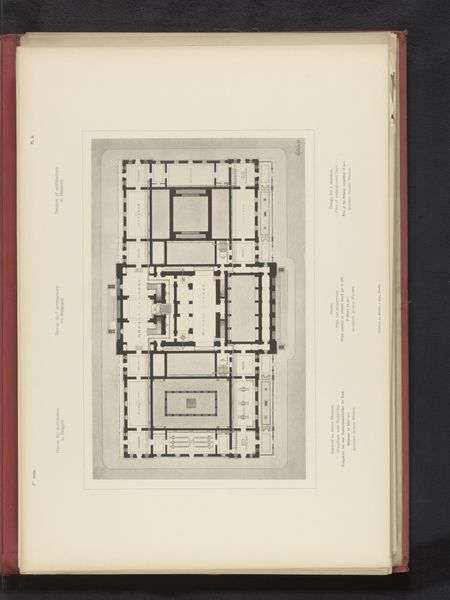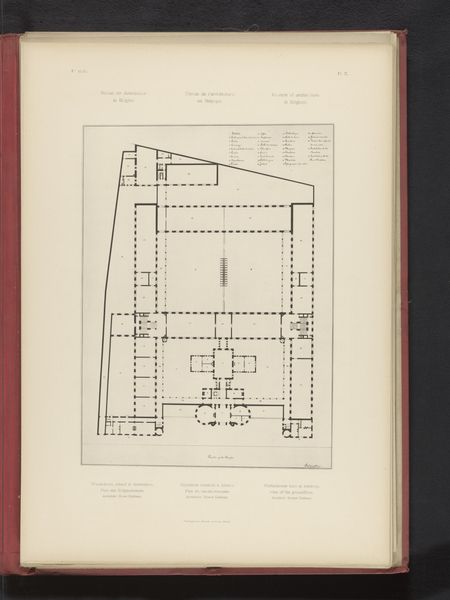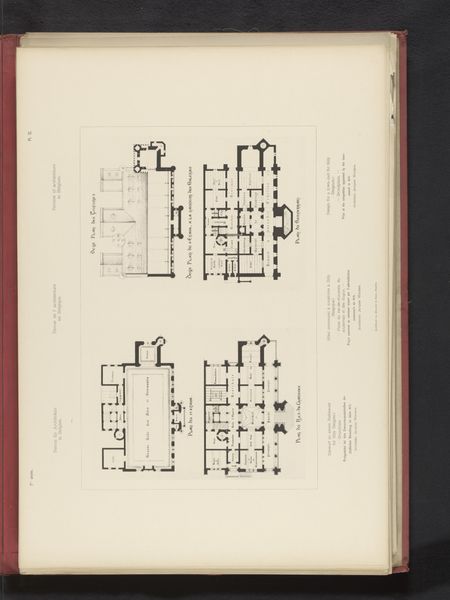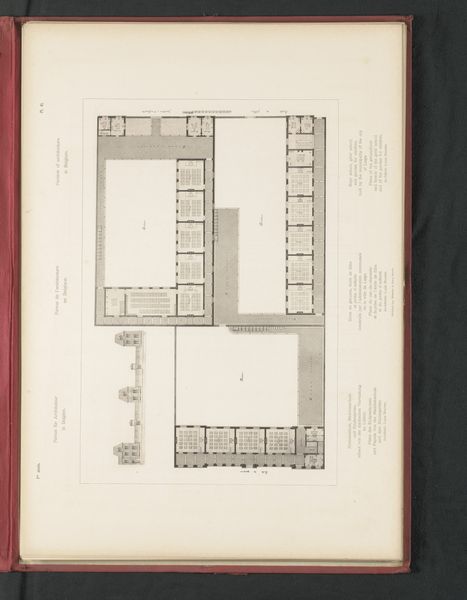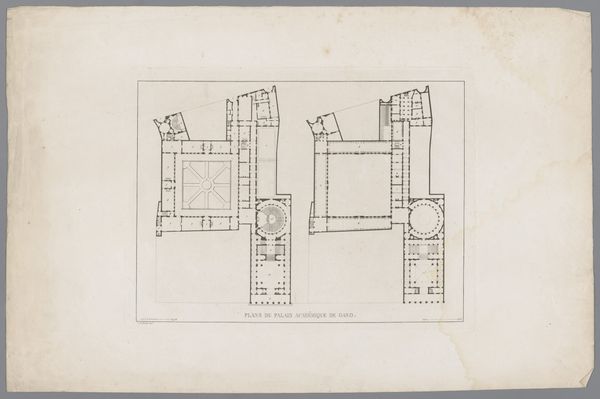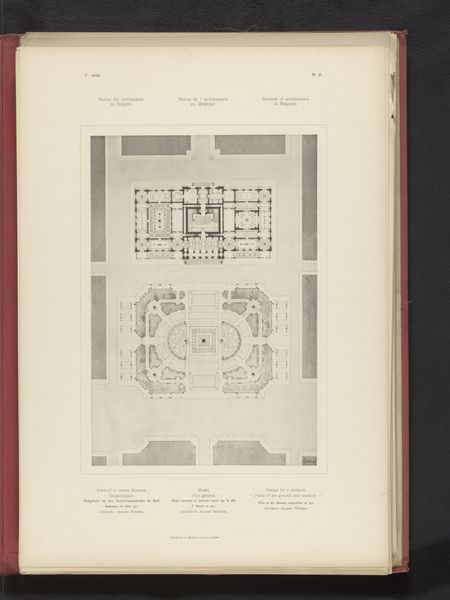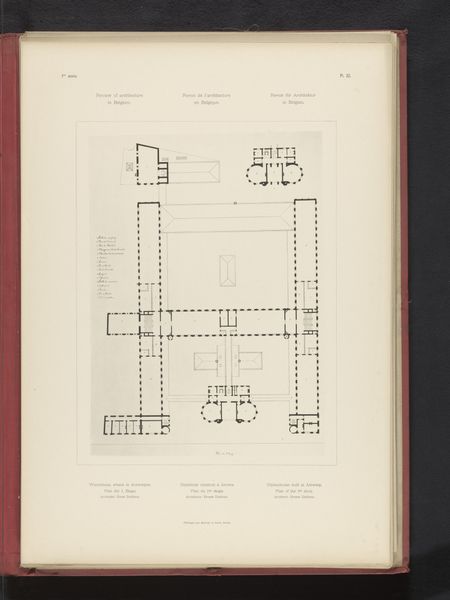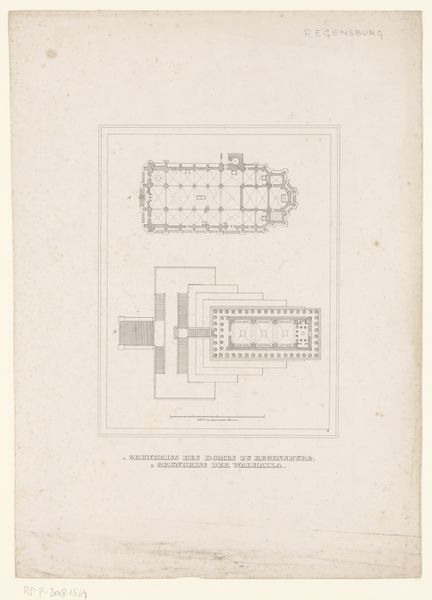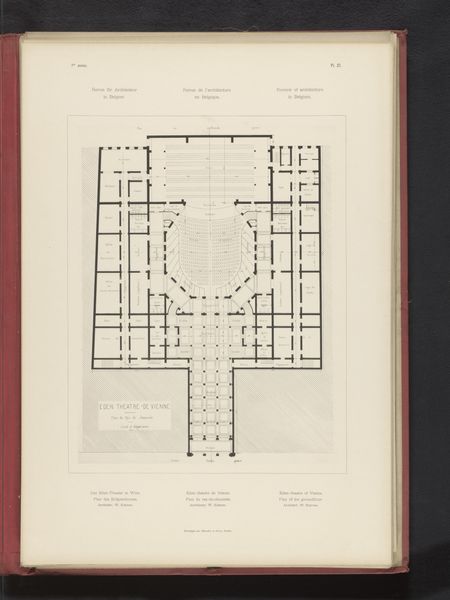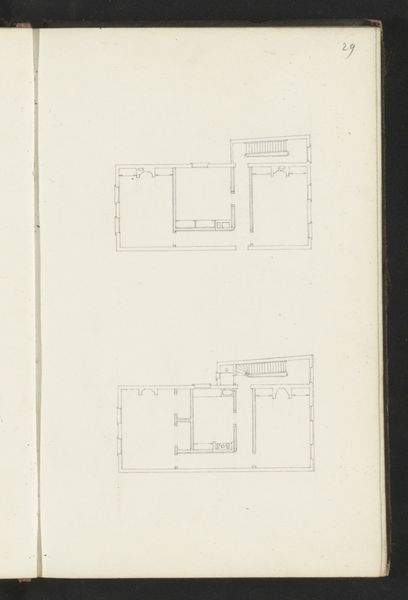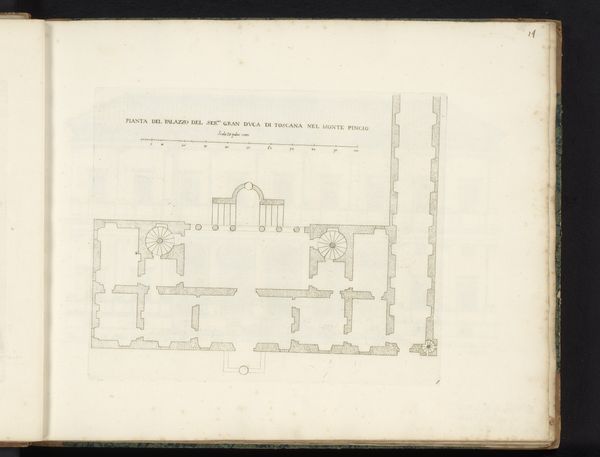
Twee reproducties van plattegronden van de begane grond en de eerste etage van het Eden-theater in Brussel, door W. Kuhnen before 1893
0:00
0:00
drawing, paper, pen, architecture
#
drawing
#
aged paper
#
homemade paper
#
paper non-digital material
#
paperlike
#
sketch book
#
paper texture
#
paper
#
personal sketchbook
#
geometric
#
folded paper
#
pen
#
paper medium
#
design on paper
#
architecture
Dimensions: height 356 mm, width 501 mm
Copyright: Rijks Museum: Open Domain
Curator: What a fascinating artifact! Here we have "Twee reproducties van plattegronden van de begane grond en de eerste etage van het Eden-theater in Brussel, door W. Kuhnen," created sometime before 1893. It’s rendered in pen on paper, depicting floor plans. Editor: It feels very clinical at first glance. Almost like an architect's dry record. But there's an elegance, isn't there, in the precision? And the paper looks wonderfully aged. It hints at stories, forgotten evenings, the very pulse of old Brussels. Curator: Absolutely. Theater, as a cultural institution, serves as a powerful symbolic mirror to society, reflecting its values and aspirations. These architectural plans locate that mirror, fix it to the social landscape. Look at how the plans map out the movement of people, dictating who sits where, access points, public and private areas. It speaks volumes about social hierarchies of the time. Editor: So, the symbolism is not just in what was *performed* there, but inherent in the design itself. I wonder how this theater functioned as a space for shaping public opinion and even potentially, political discourse? Curator: Precisely. The building becomes a stage in its own right. We need to also consider the psychological implications of such design: what does it feel like to be a performer in that circular stage, or to sit among other spectators? The radial plan creates a unified experience while at the same time codifies who occupies a higher versus lower stratum. Editor: And thinking about cultural memory, theaters often become iconic landmarks, don't they? Their architectural presence shaping the city’s identity. But here, we have simply the blueprint – a ghost image of its potential public function. This almost highlights its vulnerability, its dependence on social life for meaning. Curator: Indeed. A powerful reminder that art and architecture don’t exist in a vacuum. They require a society to breathe life into them. A potent sketch with considerable cultural resonance! Editor: Well said. It makes me want to research what sort of plays and performers graced that stage… a fascinating find indeed.
Comments
No comments
Be the first to comment and join the conversation on the ultimate creative platform.
